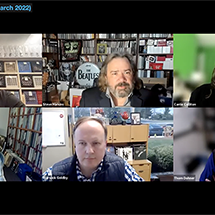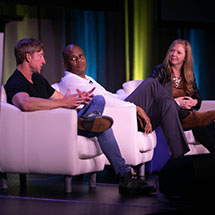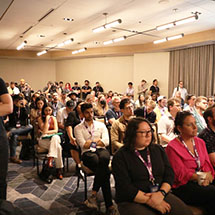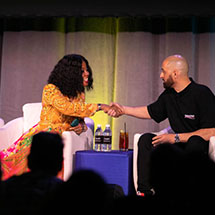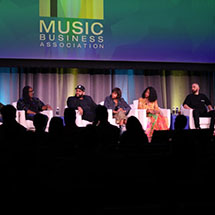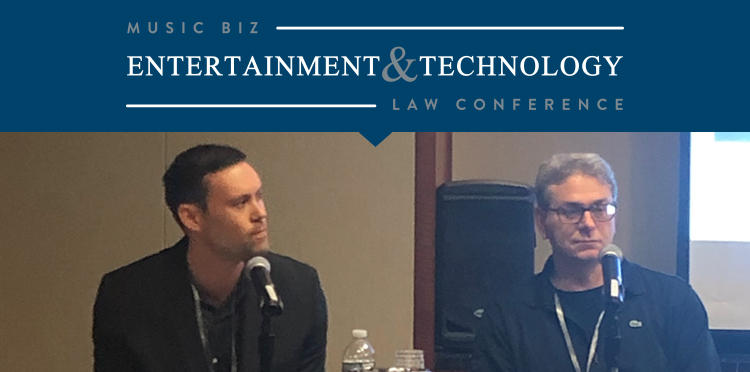
[MUSIC BIZ LAW CONFERENCE RECAP] Panel 4 — Charting The Future For the Stem Marketplace

Music Biz continues its recap of last week’s Entertainment & Technology Law Conference with a look at “Charting The Future For The Stem Marketplace.” In this session, our panelists from the tech, legal and major label communities covered how labels are beginning to roll out stem products, how licenses for stems differ than those for songs, and what the stem marketplace will look like once the medium really takes off.
Stems have emerged in recent years as a hot new commodity for labels and artists alike. Stems are broken-out components of songs — guitar parts, bass lines, vocal leads, and so on — that can be considered either “wet” (processed with effects) or “dry” (raw, not produced). Creatives can use stems in digital audio workstations as the basis for an entirely new song they are working on. Of course, as it involves the rights behind the master recording of a song, there is a major rights issue that exists even though a full sample of a song isn’t being used in the traditional sense. Right now, according to Sony Music’s Greg Norman, the label offers 27 stems, and considers each stem that they sell part of the “finished master work.” Universal Music Group offers bundles of stems which open natively in partner apps, according to company SVP of Business Development for Digital Strategy and Technology, Bill Gagnon.
So how do labels go about clearing permission for stems with their artists? For the majors, this involves direct conversation with the artists. UMG treats each stems bundle like a digital download, and will only offer the product to consumers with express consent from the artist. The same goes for Sony, with Norman saying that they would never release stems if it went against the artist’s vision for their work. However, there are some artist contracts with enough ambiguity that allow grant permission to break songs into stems. Norman posed that new contracts will need this end use to be more explicitly spelled out, with opt-in statements built in for the artist’s protection. Another question arises on the publishing side: if a song that is comprised of five stems, should there be one or five licenses issued for the composition? While the answer is currently unclear, both Norman and Gagnon report that Sony and UMG, respectively, obtained separate copyrights and ISRC numbers for each song stem they offer. And Mohnish Sani of Kobalt Music Group stated that because stems are available to the consumer just like full songs are, there must be rights in both the complete composition and the song itself. So, if there is a revenue share on the label side, there should be something similar on the publishing side as well.
JJ Rosen of Splice was on hand to discuss how his company is looking to do, “what iTunes did for songs to the samples marketplace.” Splice offers a $7.99 monthly royalty-free marketplace with preexisting samples sourced from sample labels and from sound designers creating their own samples. Users receive 100 credits a month, and samples ranging from a hand clap to a drum hit cost one credit apiece. The company views stems as a subset of music samples, and looking to the future, they have plans to revolutionize that market as well. Splice is working with content creators to create song components longer than their typical sample — think a bass line or drum beat as opposed to a hand clap or a “Yeah.” To showcase the power this marketplace yields, Rosen said the company is working with select producers to create songs based on these new stems. This trial and sample song project is expected to go on through the end of the year, with hopes of creating a full public marketplace in the future. Rosen offered that to date, Splice has paid $20 million to its partnered sample creators, and the payouts are increasing. “Every time something like this is used,” Rosen offered, “money going into the pockets of creators.” He also presented the case of producer Boi-1da, who this year won a GRAMMY and was nominated for five others, for tracks which used three Splice samples. So not only do the creators who submit stems or samples get paid, but they allow other creatives to push their art into new boundaries.
How will the major labels respond as stems become a more prominent consumer offering? There was marked excitement from both Norman and Gagnon for this market’s potential, even though as Gagnon said the industry is still playing the short game with stems for the time being. “We have a class of people who are manipulating sounds that are quickly becoming proficient at it,” Gagnon said, adding that the desire for stems will only lead the market to grow. Norman offered that the opinion of artists and other stakeholders may change as new technology to manipulate stems releases, and as new use cases for the format are developed. Another potential opportunity is to break up catalog content into its own stem marketplace. This, however, poses a challenge because it requires access to masters to create quality stem products. The panel agreed that artificial intelligence may also be a great way to help split tracks into stems in the near future. These developments echo similarities to the rise of karaoke, where artists initially were concerned with having lesser, rerecorded or generic sounding versions of their songs out in public. Fast forward to today, and karaoke apps are ubiquitous and have created a healthy new revenue stream for artists.
At that point, moderator Gary Greenstein of Wilson Sonsini Goodrich & Rosati reached out to the artist managers and lawyers in the audience for their perspectives on stems. Based on the reaction, opinions are still mixed — some love the idea of engaging fans and creators alike in an opportunity to use their songs to create, while others feel it devalues their compositions. Norman stressed that the current quality of stems and the technology to mix does not allow common consumers to easily make and illegally distribute remixes of songs, and that there is still plenty of uses for stems that are “not nefarious.” Splice offered that in the future, companies like his can serve as a “synch licensing intermediary,” which would host stems on its marketplace and sell the rights to stems to consumers at a premium. After it has been available for some time, the company would assess the splits with the label to see how they are performing, using this data to build a better marketplace that benefits Splice, the label, and their artist.
Written Materials:
- https://musicbiz.org/wp-content/uploads/2019/09/DJ-REPORT-Updated-1.pdf
- https://www.rollingstone.com/politics/politics-lists/songs-on-trial-12-landmark-music-copyright-cases-166396/de-la-soul-vs-the-turtles-1991-61686/
Music Biz’s Entertainment & Technology Law Conference brought together top players from the tech and startup, music business, and entertainment law communities at the NYC offices of Greenberg Traurig to hash out solutions to the high-profile issues facing the industry today. Be sure to check out the summaries of our Copyright Infringement, Podcast Licensing, and Metadata Transparency panels. And stay tuned tomorrow as we wrap up coverage with a look at the day’s final panel on cybersecurity & data privacy!

